- About us
- Support the Gallery
- Venue hire
- Publications
- Research library
- Organisation chart
- Employment
- Contact us
- Make a booking
- Onsite programs
- Online programs
- School visit information
- Learning resources
- Little Darlings
- Professional learning
Oodgeroo Noonuccal (1920–1993) was a Quandamooka woman, activist, poet, writer and educator. Born in Minjerribah (North Stradbroke Island), she became Queensland State Secretary of the Federal Council for Aboriginal and Torres Strait Islander Advancement in 1961, and campaigned successfully for amendments to Sections 51(xxvi) and 127 of the Constitution in 1967. Throughout her life, she aimed to promote cultural pride among Aboriginal people through her writing, which she described as 'sloganistic, civil rightish, plain and simple'. Her first book of poetry, We are Going, was published in 1964. Noonuccal returned to Minjerribah in 1971 where she taught Aboriginal culture to thousands of school children, and published two children's books. Having gained world acclaim for her writing and advocacy (for which she was also conferred with four honorary doctorates), she published her last collection of poems, Kath Walker in China, in 1988. That year, she reassumed her tribal name in protest at the Bicentennial celebrations, and returned the MBE she had been awarded in 1970.
Although Noonuccal had a reputation for fierceness, George Fetting invited her to be included in his exhibition of prominent Australian women, and found her very welcoming. He photographed her at her modest home on Minjerribah; this singular and searching image is the lasting legacy of his visit.
Gift of the artist 2010
© George Fetting/Copyright Agency, 2024
George Fetting’s large photographic portrait of writer and activist Oodgeroo of the Noonuccal Tribe was taken in 1992 and printed in 2009. It is 110 centimetres high by 88.2 centimetres wide in a modest fine wooden frame.
This large photograph is a close-up of Oodgeroo’s face resting in her left hand, which frames the lower part of her face. Chin resting on thumb and fingers pointing up towards her eyes and placed along her cheek bone. Her face is slightly to the right of centre. Soft light illuminates the right side of her face with the extreme left of her forehead, nose, and hand cast into shadow. The sepia tones of her skin stand out against a black background.
Oodgeroo’s face is cropped across her high wrinkled forehead, and short silvered hair is glimpsed on either side. Between her brows is a single deep vertical furrow. She has large dark eyes with bags beneath them. She gazes to her left at the camera. Her nose is straight and deep creases run from each side of her nose to her closed lips and then continue downward to the edge of her face. A faint line shows the edges of a dark shirt that disappears into the background.
The elements of a slightly raised left eyebrow, her liquid eyes, the pores of her skin and the whirls and cracks of her fingerprints create a detailed textural portrait of this Quandamooka woman.
Audio description script written by Krysia Kitch and voiced by Kate Matthews
George Fetting (5 portraits)



On one level The Companion talks about the most famous and frontline Australians, but on another it tells us about ourselves.
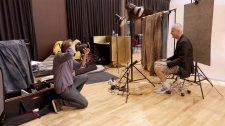

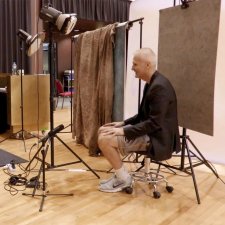
Basketballer Andrew Gaze and photographer George Fetting.
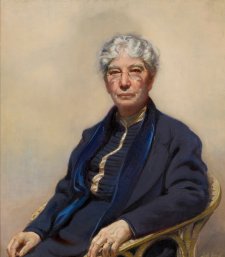
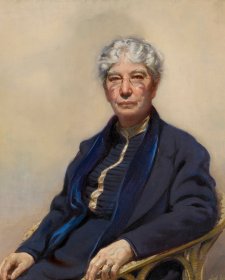
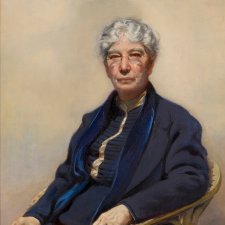
Dr Sarah Engledow explores the portraits of writers held in the National Portrait Gallery's collection.